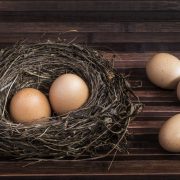Account based pensions and the age pension
Would the rate of Centrelink or Department of Veterans’ Affairs age pension increase if the amount being paid from an account-based pension reduced?
The answer is very much a case of “it depends”. There are several factors that need to be considered:
1. If the full rate of age pension is being paid (i.e. currently $1,423.60 per fortnight, including supplements – for a couple, or $944 per fortnight, including supplements – for a single person), reducing the level of pension payments from an account-based pension will not result in a change to the rate of age pension being paid.
2. If a part age pension is being paid and the age pension is assessed under the assets test, a reduction in the level of income being drawn is unlikely to result in an increase in the rate of age pension.
However, if the account balance of the super pension has reduced as a result of a downturn in investment markets, it is worth informing Centrelink of the new balance as this may result in an increase in the rate of age pension (as a result of the level of assets that exceed the assets test threshold having reduced).
As a guide, the age pension for a couple (combined) reduces by $3.00 per fortnight for each $1,000 of assets that exceed the asset test threshold. The asset test threshold for a couple that own their own home is currently $394,500. Conversely, if the level of excess assets reduces, the age pension for a couple will increase by $3.00 per fortnight for each $1,000 reduction in the excess assets.
It is a fine balancing act and some caution needs to be exercised. A reduction in the level of assets may result in the age pension now being assessed under the income test, rather than the assets test. If this occurs, the following comments will be applicable.
3. For account-based pensions being assessed under the income test, the date the pension commenced to be paid is an important factor.
If the account-based commenced after 31 December 2014, and/or if the age pension commenced to be paid after that date, reducing the amount being paid from the account-based pension will not have any impact on the rate of age pension being paid.
4. However, if the account-based pension, and the age pension have both been continuously paid since before 1 January 2015, reducing the income drawdowns from the account-based pension may result in an increase to the rate of age pension paid by Centrelink.
In these cases, the amount of income counted under the income test is the actual income payable for the financial year, less an amount referred to as the deductible amount.
The deductible amount is calculated when the pension first commences and is based on the opening balance of the account-based pension, divided by the relevant number. The relevant number is the life expectancy of the pensioner, or reversionary pensioner (if nominated – in which case the longer of the two life expectancies is used). Once the deductible amount is established, it remains constant for the life of the account-based pension unless lump sums withdrawals are made, in which case the deductible amount is recalculated.
For example, if a 65-year old male commenced an account-based pension (with no reversionary pensioner being nomination) on 1 December 2014, and the opening account balance was $450,000, the annual deductible amount will be $24,272. ($450,000 ÷ 18.54). This amount will be deducted from the actual income being received from the super pension to determine the amount of income assessable under the income test. Therefore, if the level of income being received from the super pension is greater than the deductible amount, reducing the actual income being drawn will result in an increase in the rate of age pension.
Taking this example one step further, if the income being drawn from the account-based pension was (say) $40,000 per annum, only $15,728 ($40,000 – $24,272) would be counted under the income test.
If the super fund were requested to reduce the annual income payments from $40,000 to (say) $30,000, the amount assessed under the income test would reduce from $15,728 to $5,728. This would result in an increase in the amount of age pension being paid.
Having said that, if the level of income being drawn from an account-based pension is less than the deductible amount, a reduction in the level of income being received would not result in an increase in the rate of age pension being paid as the income received from their account-based pension is not affecting the level of age pension being paid. Likewise, there would be little value in reducing the income from the account-based pension to an amount less than the deductible amount, other than perhaps, to preserve money in the superannuation environment.
Therefore, where a person is receiving less than the full rate of age pension, and their super pension is an account-based pension, a reduction in the amount of income being drawn may result in an increase in the age pension entitlement provided the account-based pension commenced to be paid before 1 January 2015.
If this situation applies, and the super fund is being requested to reduce the level of income payments, it is important to ask the super fund to issue an amended “Details of income stream product form (SA 330)” and for this to be given to Centrelink to enable the reassessment of the age pension to be made.
In summary, and increase in the rate of age pension being paid by Centrelink may increase where:
1. A part age pension is being paid and is being assessed under the assets, and there has been a reduction in the account balance of the account-based pension, or:
2. A part-age pension is being paid under the income test and an account-based pension commenced to be paid before 1 January 2015, and the level of income being drawn from the account-based pension is reduced.
If you have questions about your superannuation or Centrelink and Veterans Affairs’ pensions, speak with a qualified financial planner.
Source: Peter Kelly | Centrepoint Alliance






